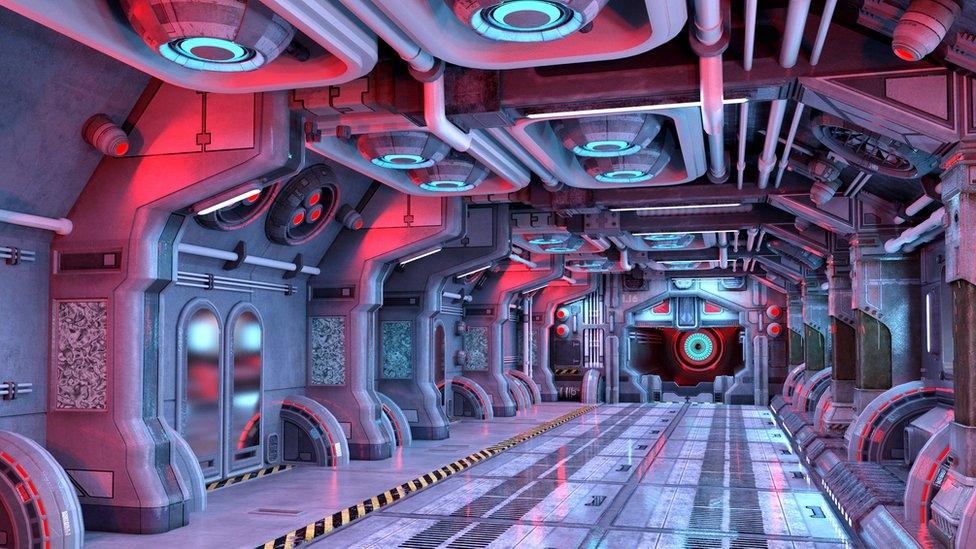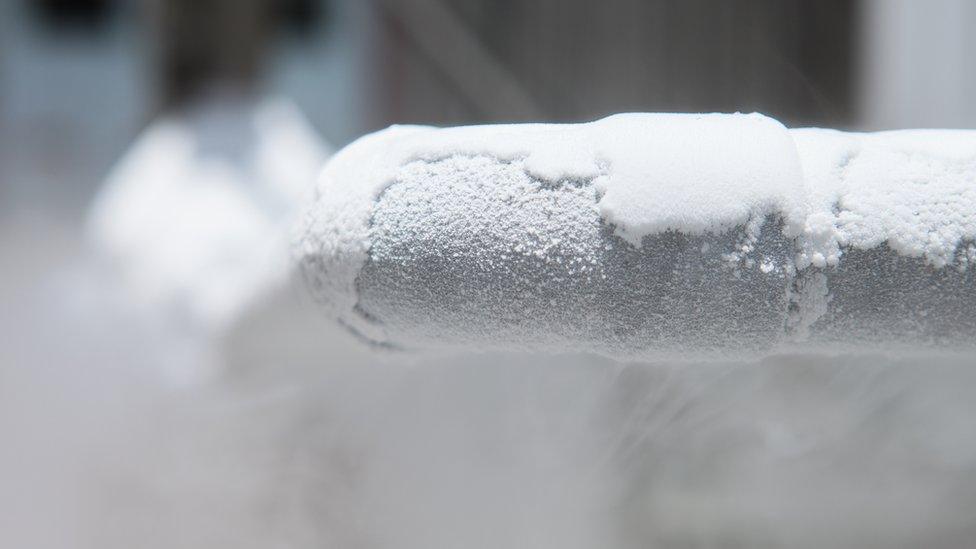What does cryopreservation do to human bodies?
- Published

It looks like a futuristic film set - but it is also the inside of a cryogenic freezer farm
Cryonics is one extreme of cryopreservation where the whole body is frozen in the hope that one day it will be possible to revive it.
On a smaller scale in day-to-day medicine, freezing is an extremely useful technique for storing living cells, such as blood cells, bone marrow, sperm and embryos, at ultra-low temperatures.
But scientists agree that preserving and reawakening the complete human body is a remote possibility which would take massive breakthroughs in technology.
How unlikely?
Prof John Armitage, director of tissue banking at the University of Bristol, believes you can never say never in science but there was little chance of it happening based on current knowledge.
He said taking tissues from healthy people to be stored for future use was one thing but taking a diseased body, freezing it safely - including the complex structure of the brain - and reactivating it was a far, far more difficult task.
"What are the chances there wouldn't be some damage?" Prof Armitage says.
"We are not even at the stage of cryopreserving organs yet, so doing it with a whole body would be a huge challenge."
Organs themselves are very complicated, containing different types of cells, blood vessels and an inter-cellular structure - which would all need to be preserved.
Barry Fuller, professor in surgical science and low temperature medicine at University College London, said the first step was to demonstrate that human organs could be cryopreserved for transplantation.
But at the moment the equipment to make that happen is not available, he said.
"This is why we have to say that at the moment we have no objective evidence that a whole human body can survive cryopreservation with cells which will function after rearming," he said.
What happens to the body?
After death, patients have to be acted on quickly.
In the UK, a group of volunteers trained in cryonics takes care of the body, starts the process of freezing and arranges for it to be shipped to the country where it is to be stored.
At this stage, dry ice is used to keep the body at a low temperature.

Bodies are cryogenically preserved in liquid nitrogen at extremely low temperatures
Once at the storage facility, patients are infused with cryoprotectants (like antifreeze) to prevent ice crystal formation - which would kill cells - before the temperature is slowly lowered and they are preserved in liquid nitrogen at extremely low temperatures of below -130C.
The low temperatures are needed to allow the cells to survive dehydration after death - but uncontrolled dehydration and freezing is also lethal to living cells, so it has to be done carefully.
The eventual aim is that one day they will be rewarmed and revived, but there is no evidence or guarantee that they can be.
Several hundred people have already paid to have their bodies cryogenically preserved in three existing facilities in the US and Russia, and there are as many as 1,250 on waiting lists.
Cryonics UK, a non-profit organisation which provides assistance to people in the UK who want their body to be frozen on death, said it has helped 10 people so far.
- Published15 October 2015
